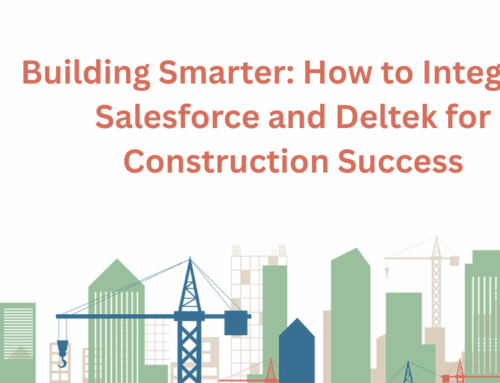Bidding Better: Best Practices for Optimizing Project Decision-Making with Salesforce
A Guide For Growing AEC Firms
When running a small Architecture, Engineering, and Construction (AEC) firm, deciding what projects to take on is crucial. You have limited time and resources, so project bids require careful consideration and strategic judgment. But what if you could make this process easier while building for scale?
For growing AEC firms, tracking decisions doesn’t have to be complicated. Make capturing decisions simple and establish a reliable process that can scale with you and offer valuable insight as your business expands. Here are some of the best practices for growing firms that want to establish a solid, data-driven process for project decision-making.
Don’t Let “No” Fade Into the Background
It’s easy to remember and track the projects you pursue—you’ve got a full record of pitches, meetings, and materials to remind you. But tracking the times you say no to bidding on a project is just as worthwhile. Why? Because it creates a clear picture of all of your interactions with a client. If you’re not tracking how often you refuse to bid on projects, you may end up saying no too many times, leading clients to drop you from their proposal/bid cycles.
Record every decision in Salesforce, whether or not you decide to move forward. Use this data to build a detailed record of your RFP/ITB activities. Over time, you might spot trends that could indicate whether a specific client or type of project is worth pursuing while staying aware of the health of your client relationships.
Identify the ‘Why’ Behind Every Decision
Decision-making in the AEC industry is rarely black and white. Whether the project was too small, too distant, or you lacked the resources, each reason tells a story. When you decide not to bid or pursue a project, document your reasoning in Salesforce using tools like Chatter.
Recording these reasons serves two purposes. First, it provides learning opportunities for your team to spot potential red flags themselves, empowering them to make better decisions. Second, it’s a self-check mechanism to prevent any hasty decisions, ensuring every choice you make is well-thought-out and justified, even if it just takes you a minute or two to capture your reasoning.
Make Capturing the Data Easy
Let’s be honest—no one really likes data entry. It’s like being told to eat your vegetables as a kid. You knew it was good for you, but your parents still had to find ways to make it easy, sneaking veggies into other dishes like soups, muffins, and pasta. The same goes for data entry. It needs to be as easy and painless as possible for strong adoption and consistency.
To keep your record-keeping straightforward and user-friendly, start with something as simple as changing the Opportunity status to ‘No Pursuit’ or adding a note in Salesforce’s Chatter function. The flexibility to do this on any device—whether it’s your smartphone or laptop—makes the process even easier, ensuring quick, informative updates no matter where you are.
Keep It Clean
Data has a funny habit of growing exponentially. And if you don’t have clean data from the start, making complex decisions down the line becomes more difficult. Prepare your business for growth by maintaining high-quality, clean data from the get-go. This is vital for making informed decisions and assessing the financial impacts of your project pursuits. Each recorded decision in Salesforce is a stepping stone toward understanding your firm’s trajectory and makes it easier to adjust your strategy for sustainable, scalable growth.
Take Action
Salesforce can be a crucial ally for growing AEC firms, simplifying decision-making processes while providing valuable insights for strategic expansion.
I recommend starting with the Hunley Group Industry Base Package for firms new to Salesforce that are looking for guidance and support. This provides standard structures for capturing relationships and tracking opportunities perfectly suited to the AEC industry. Even at this fundamental level, you can easily integrate the decision-making best practices outlined here.
Remember, Salesforce is more than just a tool—the ‘easy button’ can boost your firm’s efficiency and set you on the path to success.






